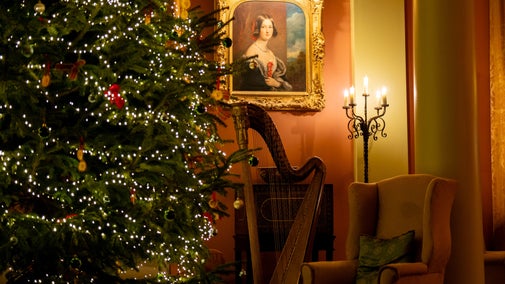The people who perished
Joseph W. Grainge, aged 43, House Steward
Joseph was in service with the Londonderry family for approximately 12 years. He had previously worked as a footman in London and as the house steward at Saltram House, Devon (the historical seat of the Earls of Morley).
Married to Kate they had five children and their home was based in Battersea. He was well known in the area around Wynyard Park. Joseph sat on the Parish Council of Thorpe Thewles and was a keen local cricketer.
Highly thought of by the Londonderry family, Joseph was complimented by the Prince of Wales in a letter to Lord Londonderry after a visit to Wynyard. He was regarded as an excellent manager running all the Londonderry’s houses and was greatly respected by the other staff.
His body was found by the steamship Walrus on its way to Kircubbin, near Gransha Point (between Kircubbin and Portaferry) on 26 May 1895. His keys, a gold hunting watch and a champagne knife identified him. He is buried in Hillingdon and Uxbridge Cemetery, near his birthplace.
Eliza Taunt, aged 46, Head Cook
Eliza’s father was a coachman employed by Lord Eglinton at Eglinton Castle, Ayrshire. In 1861 Eliza, her parents and siblings lived in Redburn Cottage on the estate. The 1871 census records Eliza was working as a kitchen maid at Critchel House in Devon.
She was in employment as cook to Lord and Lady Castlereagh (later the 6th Marquess and Marchioness) at their home at Langham Lodge, Rutland, possibly from the time of their marriage in 1875.
She became the head cook to the Londonderry family at their residences. This was a highly responsible and skilled role which will have enhanced Theresa’s reputation as the premier hostess in high society gatherings.
Eliza’s body was never found.
Elizabeth Dougal, aged 43, Housekeeper
Elizabeth Dougal was employed by the Londonderry family just two weeks before the boating expedition. She was born in Leith in 1851. Her father was a porter and she was the eldest of eight children. By 1881 she was working as a 29-year-old housemaid for an elderly vicar and his wife in a village in Yorkshire.
By 1891 she was a housekeeper for the Duke of Athol in Eaton Place, Belgravia, and at Blair Castle. Her new job with the Marquess of Londonderry at Mount Stewart seems to have been one with excellent prospects. The invitation to join the picnic outing would have been a great opportunity to get to know the other senior staff.
Elizabeth’s body was never found.
William Rowe, aged 32, Valet to Lord Londonderry
William Rowe was married on 4 March 1895 five weeks prior to the accident. He married Emily Anne Hearn, also aged 32, in the Parish of Upper Teddington, Middlesex. William’s address at the time is recorded as Park Lane (Londonderry House), but he was brought up in Huntspill, near the coast in north Somerset. Other sons in this family also went into service.
One of William Rowe’s notebooks is held at Durham County Records Office. It provides a fascinating glimpse into the life of a valet and records all payments made by William on behalf of the Marquess. Items such as buttonholes, train tickets and taxi cabs are noted and dated. William is described in newspaper accounts as ‘a gentleman who had made many friends by his urbanity and goodness’.
William’s body was never recovered. Emily Ann, his widow, married again in 1901.











